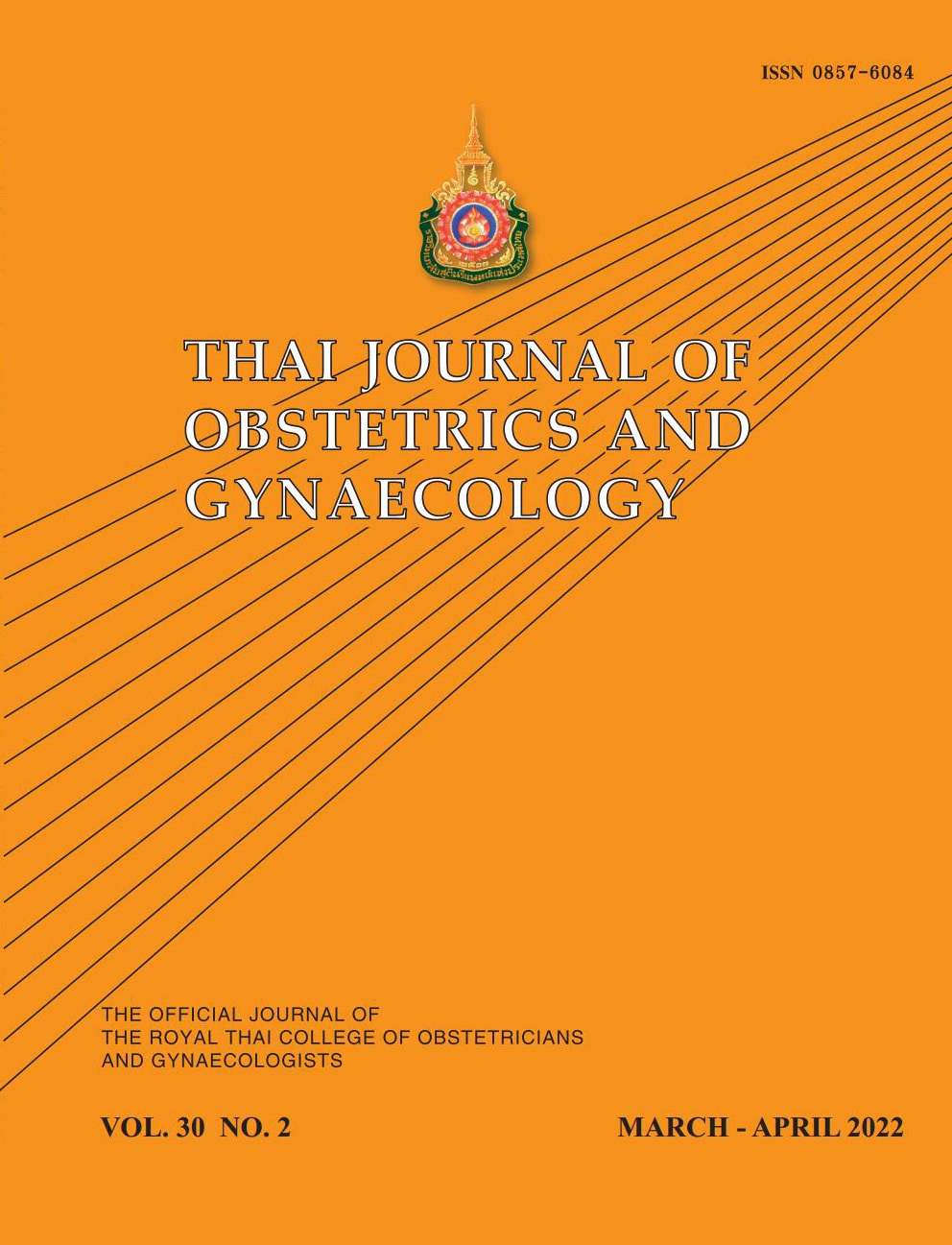Accuracy of 12-hour versus 24-hour Urine Collection for Diagnosis of Preeclampsia
Main Article Content
Abstract
Objectives: To evaluate the accuracy of a 12-hour urine collection compared to a 24-hour urine collection for diagnosis of preeclampsia.
Materials and Methods: The diagnostic study was conducted between March and September 2020 at Maharat Nakhon Ratchasima Hospital, Thailand. The participants were pregnant women at ≥ 20 weeks of gestation composed with blood pressure ≥ 140/90 mmHg or clinically suspected preeclampsia. The participants were hospitalized for evaluation of blood and urine protein analysis. The 24-hour urine protein collection was stratified to the two 12-hour urine protein collection samples. The statistical analyses were used to analyze the accuracy of the test and determine the appropriate cut-off value of 12-hour urine protein compared with the gold standard of the 24-hour urine protein value.
Results: The study included 87 participants with 12-hour urine collection, which comprised 174 samples to compare with 24-hour urine collection. The incidence of preeclampsia was 47 patients (54%). The 12-hour urine collection included 174 samples. The appropriate cut-off value was ≥ 143 mg with sensitivity of 89.8%, specificity of 90.8%, and accuracy of 90.2% with near-perfect agreement (Cohen’s kappa 0.82). The 12-hour urine collection test offered higher accuracy than urine protein creatinine ratio and urine protein dipstick test.
Conclusion: The 12-hour urine collection provided high accuracy results and was the alternative test to diagnose preeclampsia.
Article Details

This work is licensed under a Creative Commons Attribution-NonCommercial-NoDerivatives 4.0 International License.
References
American College of Obstetricians and Gynecologists. ACOG Practice Bulletin No. 202: gestational hypertension and preeclampsia. Obstet Gynecol 2019;133:e1-25
National Institute for Health and Care Excellence (NICE). Hypertension in pregnancy: diagnosis and management: NICE Guideline [NG133] 2019. Available from: https://www.nice.org.uk/guidance/ng133/resources/hypertension-in-pregnancy-diagnosis-and-management-pdf-66141717671365 [Accessed January 9, 2020].
Cunningham FG, Leveno KJ, Bloom SL, Spong C, Dashe JS. Hoffman BL, et al. Williams obstetrics. 25th ed. New York: McGraw-Hill education medical 2018;1344.
Lim KH, Steinberg G. Preeclampsia: practical essentials, overview, pathophysiology [Internet]. Emedicine.medscape.com2018 [updated 2018 November 29; cited 2020 Jan 9]. Available from: https://emedicine.medscape.com/article/1476919-overview.
Silva RM, Pereira SR, Rego S, Clode N. Accuracy of 12-hour urine collection in the diagnosis of pre-eclampsia. Int J Gynecol Obstet 2018;142:277-82.
Leeman L, Dresang ML, Fontaine WP. Hypertensive disorders of pregnancy. Am Fam Physician 2016;93: 121-9.
Thomas B. Proteinuria workup: approach considerations, renal biopsy [Internet]. Emedicine.medscape.com 2020 [updated 2020 Mar 25; cited 2020 Nov 30]. Available form: https://emedicine.medscape.com/article/238158-overview
Watson PF, Petrie A, Method agreement analysis: a review of correct methodology. Theriogenology 2010;73:1167-79.
Tun C, Quiñones JN, Kurt A, Smulian JC, Rochon M. Comparison of 12-hour urine protein and protein:creatinine ratio with 24-hour urine protein for the diagnosis of preeclampsia. Am J Obstet Gynecol 2012;207:233.e1-8.
Vinayachandran S, Darsana K. Correlation of spot urine albumin and 12-hour urine protein with 24-hour urine protein in pre-eclampsia. J Evid Based Med Health 2017;4:5486-90.

